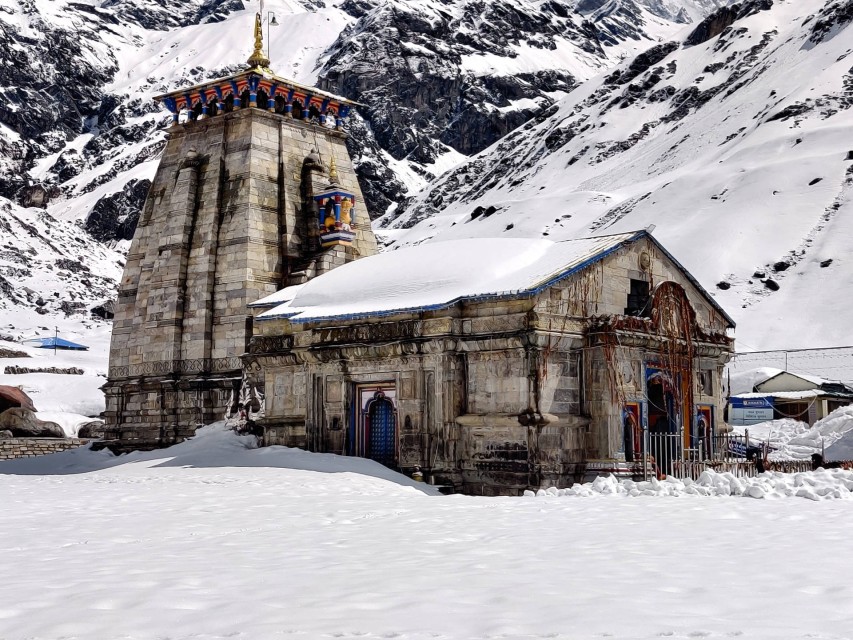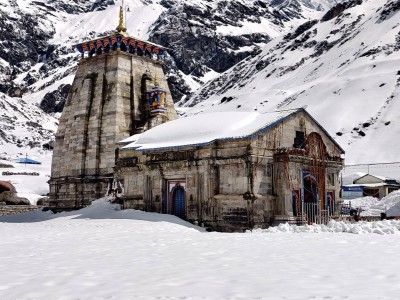Hi, How can I help you ?
Hi, How can I help you ?

Kedarnath is a town located in the Rudraprayag district of the Indian state of Uttarakhand. It is situated in the Himalayan range at an elevation of approximately 3,583 meters (11,755 feet) above sea level. The town is famous for its ancient Hindu temple, the Kedarnath Temple, which is one of the twelve Jyotirlingas (divine representations of Lord Shiva) and a highly revered pilgrimage site for Hindus. The Kedarnath Temple is dedicated to Lord Shiva and is believed to have been built in the 8th century by Adi Shankaracharya, a renowned Hindu philosopher and theologian. The temple is surrounded by magnificent snow-capped peaks and lies near the head of the Mandakini River. It is located in a picturesque valley, offering breathtaking views of the surrounding Himalayan landscape. The journey to Kedarnath is considered a significant undertaking for devotees and pilgrims. The traditional route involves a trek of approximately 16 kilometers (10 miles) from the town of Gaurikund, which is the base camp for the pilgrimage. The trek takes visitors through rugged mountain trails, dense forests, and scenic landscapes, providing a spiritually enriching and physically challenging experience. Apart from the Kedarnath Temple, the town itself has limited infrastructure and facilities, primarily catering to the needs of pilgrims during the pilgrimage season, which typically lasts from May to October. However, due to its remote location and harsh weather conditions, the town remains sparsely populated for most of the year. Kedarnath holds immense religious and cultural significance for Hindus, and the temple attracts a large number of devotees each year. The pilgrimage to Kedarnath is believed to cleanse one's sins and bestow blessings and divine grace. The town's natural beauty, serenity, and spiritual ambiance make it a sought-after destination for not just religious tourists but also nature enthusiasts and adventure seekers. In recent years, Kedarnath has also gained international attention due to the devastating floods and landslides that occurred in 2013, causing significant damage to the town and its surroundings. However, efforts have been made to restore and rebuild the area, allowing visitors to once again experience the divine aura and natural splendor of Kedarnath.

Kedarnath is a town located in the Rudraprayag district of the Indian state of Uttarakhand. It is situated in the Himalayan range at an elevation of approximately 3,583 meters (11,755 feet) above sea level. The town is famous for its ancient Hindu temple, the Kedarnath Temple, which is one of the twelve Jyotirlingas (divine representations of Lord Shiva) and a highly revered pilgrimage site for Hindus. The Kedarnath Temple is dedicated to Lord Shiva and is believed to have been built in the 8th century by Adi Shankaracharya, a renowned Hindu philosopher and theologian. The temple is surrounded by magnificent snow-capped peaks and lies near the head of the Mandakini River. It is located in a picturesque valley, offering breathtaking views of the surrounding Himalayan landscape. The journey to Kedarnath is considered a significant undertaking for devotees and pilgrims. The traditional route involves a trek of approximately 16 kilometers (10 miles) from the town of Gaurikund, which is the base camp for the pilgrimage. The trek takes visitors through rugged mountain trails, dense forests, and scenic landscapes, providing a spiritually enriching and physically challenging experience. Apart from the Kedarnath Temple, the town itself has limited infrastructure and facilities, primarily catering to the needs of pilgrims during the pilgrimage season, which typically lasts from May to October. However, due to its remote location and harsh weather conditions, the town remains sparsely populated for most of the year. Kedarnath holds immense religious and cultural significance for Hindus, and the temple attracts a large number of devotees each year. The pilgrimage to Kedarnath is believed to cleanse one's sins and bestow blessings and divine grace. The town's natural beauty, serenity, and spiritual ambiance make it a sought-after destination for not just religious tourists but also nature enthusiasts and adventure seekers. In recent years, Kedarnath has also gained international attention due to the devastating floods and landslides that occurred in 2013, causing significant damage to the town and its surroundings. However, efforts have been made to restore and rebuild the area, allowing visitors to once again experience the divine aura and natural splendor of Kedarnath.